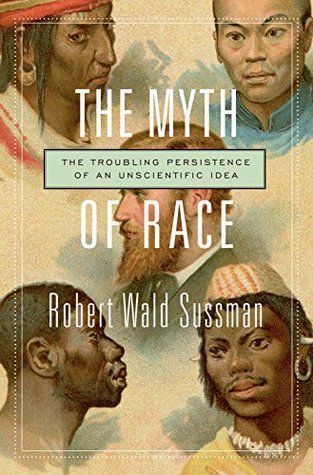More on this book
Kindle Notes & Highlights
Read between
June 3, 2020 - March 4, 2021
In 1950, UNESCO issued a statement asserting that all humans belong to the same species and that “race” is not a biological reality but a myth.
Today the vast majority of those involved in research on human variation would agree that biological races do not exist among humans. Among those who study the subject, who use and accept modern scientific techniques and logic, this scientific fact is as valid and true as the fact that the earth is round and revolves around the sun.
It seems that the belief in human races, carrying along with it the prejudice and hatred of “racism,” is so embedded in our culture and has been an integral part of our worldview for so long that many of us assume that it just must be true.
Even if you are not a racist, your life is affected by this ordered structure. We are born into a racist society.
There are no major complex behaviors that directly correlate with what might be considered human “racial” characteristics. There is no inherent relationship between intelligence, law-abidingness, or economic practices and race, just as there is no relationship between nose size, height, blood group, or skin color and any set of complex human behaviors.
Many of our basic policies of race and racism have been developed as a way to keep these leaders and their followers in control of the way we live our modern lives.
Recent studies have shown us that humans have been migrating since Homo sapiens evolved some 200,000 years ago. This migration has not been in one direction but had happened back and forth. Our genes have been mixing since we evolved, and our genetic structure looks more like a complex, intermixed trellis than a simple candelabra
We humans are more similar to each other as a group than we are to one another within any particular racial or genetic category.
In biology, a species is defined as a population of individuals who are able to mate and have viable offspring; that is, offspring who are also successful in reproducing.
Since speciation develops very slowly, it is useful to recognize intermediate stages in this process. Populations of a species undergoing differentiation would show genetic and morphological variation due to a buildup of genetic differences but would still be able to breed and have offspring that could successfully reproduce. They would be in various stages of the process of speciation but not yet different species. In biological terminology, it is these populations that are considered “races” or “subspecies”
Basically, subspecies within a species are geographically, morphologically, and genetically distinct populations but still maintain the possibility of successful interbreeding
A commonly used method to quantify the amount of within- to among-group genetic diversity is through examining molecular data, using statistics measuring genetic differences within and between populations of a species. Using this method, biologists have set a minimal threshold for the amount of genetic differentiation that is required to recognize subspecies (Smith, Chiszar, and Montanucci 1997). Compared to other large mammals with wide geographic distributions, human populations do not reach this threshold. In fact, even though humans have the widest distribution, the measure of human
...more
Using a number of molecular markers, Templeton (1998, 2013), further, has shown that the degree of isolation among human populations that would have been necessary for the formation of biological subspecies or races never occurred during the 200,000 years of modern human evolution.
Because of the extensive evidence for genetic interchange through population movements and recurrent gene flow going back at least hundreds of thousands of years ago, there is only one evolutionary lineage of humanity and there are no subspecies or races.… Human evolution and population structure has been and is characterized by many locally differentiated populations coexisting at any given time, but with sufficient contact to make all of humanity a single lineage sharing a common, long-term evolutionary fate.
Thus, given current scientific data, biological races do not exist among modern humans today, and they have never existed in the past.
If races do not exist as a biological reality, why do so many people still believe that they do? In fact, even though biological races do not exist, the concept of race obviously is still a reality, as is racism.
Thus, the concept of human races is real. It is not a biological reality, however, but a cultural one. Race is not a part of our biology, but it is definitely a part of our culture.


